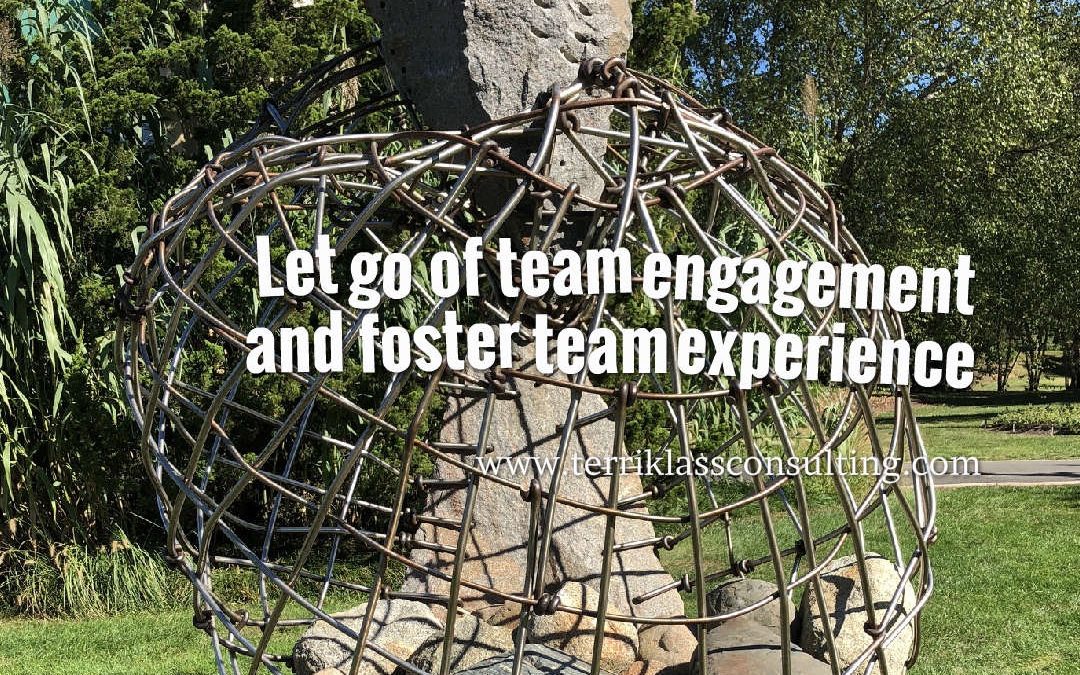For many years organizations have been focusing on ways to increase employee and team member engagement. Study after study pinpoints steps to help our companies cultivate deeper team engagement. According to a recent Gallop poll, only 15% of employees globally are engaged. Perhaps, attempting to improve team engagement isn’t what we should be concentrating on, but rather exploring and developing strategies to elevate the team experience. After all, leaders have been turning over backwards to fuel their customer experience. Maybe it is finally time to move from team engagement to team experience.
[Tweet “The time is ripe to move from team engagement to team experience.”]
Powerful ways to move from team engagement to team experience:
EVALUATE THE PHYSICAL DESIGN OF THE WORKPLACE
All workspaces are not created equal and that also means that what one team finds comfortable and safe another may not. There are so many new designs in organizations today from choosing a new desk daily to designated cubicles to conference rooms to working remotely. Leaders need to ask their team members if the current workspace configuration is conducive to work productivity, customer connections, relationship building and innovation.
- How is the noise level? Is it impacting workflow?
- Are team members spending time collaborating or is the physical space preventing that from happening?
- Are there quiet places to hold meetings without disturbing others?
- Are the restrooms clean and located in realistic places?
- Is there an inviting community room to congregate for coffee and lunch?
- Are healthy snacks available?
REVISIT CORE VALUES
It’s a helpful exercise for a company to take time and review the values that decisions and actions are based. When everyone knows what the values are and how that impacts their actions, a more enjoyable team experience will occur. Additionally, asking team members how they use the values to drive their behavior and actions with each other and customers can add to the work satisfaction too.
[Tweet “A team experience grows when core values are clearly explained and embraced.”]
HONOR THE CULTURE OF THE TEAM
Knowing what rituals are important can empower team members to be more active participants and feel more part of the workplace. When people know what work routines are expected they are more likely to fit in and belong and that leads to more fulfilling team experiences. There should never be any secrets to how a day looks with the team including the norms of birthday celebrations and how to work from home. The more team members know about the team customs, the happier and more connected they will feel.
FORM ACCOUNTABILITY PARTNERSHIPS
There’s nothing better for our career growth than having a “buddy” who cheers us on when we are successful but also shares honest feedback when we need to make a change. When teams pair people up to hold each other accountable for projects, actions and decisions, a deep bonding will emerge. That meaningful connection is key to building a positive team experience.
- Create a formal accountability partnership program where each team member is paired with another team member
- Explain the importance of providing support and guidance for each accountability partner
- Set goals and meetings to update each other
- Be the best cheerleaders for one another
COMMIT TO AN ON-GOING DIALOGUE
To move from simple team engagement to impactful team experience there needs to be a continual discussion on what isn’t working and what is going well. Team members must feel safe to share their input and suggestions and be taken seriously. To build a sustainable team experience means showing respect and value for each team member.
How have you moved from team engagement to team experience? What additional strategies have elevated your team experience?



I like how you included “workspace” in your discussion on team development. While there are pros and cons to individual offices vs the “bullpen” approach, I’ve always felt that team relationships are more easily built in an open workspace. Offices are nice, and usually occupy the circumference of the floor, but they can also be isolating. Open work spaces can be noisy and offer little privacy, but so many relationships are developed when we walk walk by and engage in small talk that often leads to something more significant.
I agree that there is so much to gain from having open workspaces that are inviting for team members to collaborate and share ideas. The flip side of that can be not having enough quiet spaces to reflect and individually create. So as long as an organization can build both in, then there are positives to both in cultivating team experiences. Whatever the design, the leaders need to make sure people feel safe,comfortable and valuable.
Thanks LaRae for your great comments!
Thanks for your last point – keep talking about it. I’ve worked places where we’ve tinkered. We’ve changed seating, had workshops on values and celebrated everything on a regular basis. The problem was, it was more like working down a checklist for the leadership team than creating a true focus on the team experience. Not everything will have the impact we intend and it’s important to check in and make adjustments. Even more important is your emphasis on dialogue. In those same workplaces we’ve had comment boxes in the cafeteria and yes, feedback was addressed, at all hand meetings, with absolutely no two-way conversation or attempt to have a conversation… it was a leadership monologue all the way.
Will share!
Alli
Having a meaningful two-way dialogue is essential to cultivating a team experience that works for all the team members. You are right that a checklist coming from senior leaders is a waste if it doesn’t include what is important to individuals on the team. My best team experiences involved being heard and taken seriously. When we feel valued and connected we begin to have a positive growth team experience.
Thanks so much Alli for sharing your story with us!